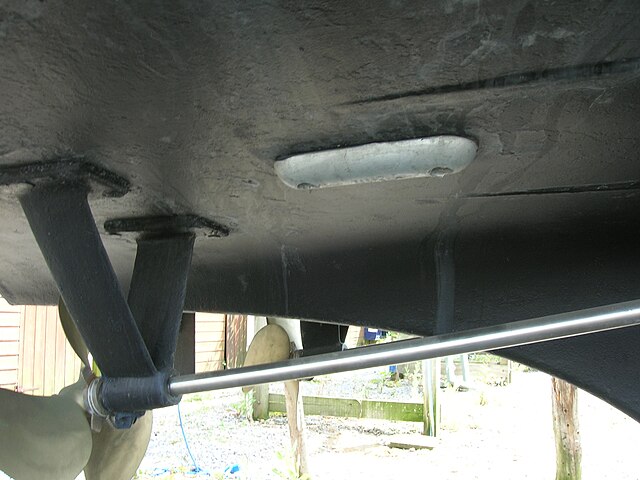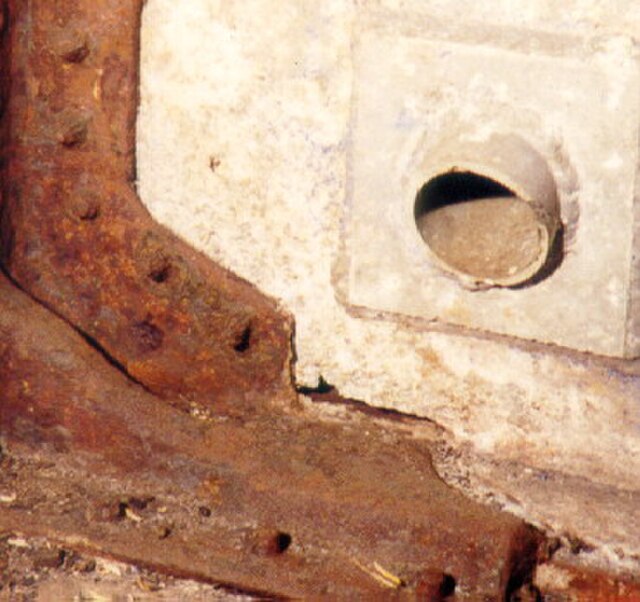Cathodic protection is a technique used to control the corrosion of a metal surface by making it the cathode of an electrochemical cell. A simple method of protection connects the metal to be protected to a more easily corroded "sacrificial metal" to act as the anode. The sacrificial metal then corrodes instead of the protected metal. For structures such as long pipelines, where passive galvanic cathodic protection is not adequate, an external DC electrical power source is used to provide sufficient current.
Aluminum sacrificial anodes (light colored rectangular bars) mounted on a steel jacket structure.
Zinc sacrificial anode (rounded object) screwed to the underside of the hull of a small boat.
Galvanic sacrificial anode attached to the hull of a ship, showing corrosion.
An air cooled cathodic protection rectifier connected to a pipeline.
Corrosion is a natural process that converts a refined metal into a more chemically stable oxide. It is the gradual deterioration of materials by chemical or electrochemical reaction with their environment. Corrosion engineering is the field dedicated to controlling and preventing corrosion.
Corrosion on exposed metal, including a bolt and nut
Galvanic corrosion of an aluminium plate occurred when the plate was connected to a mild steel structural support.
Gold nuggets do not naturally corrode, even on a geological time scale.
Normal microstructure of Type 304 stainless steel surface








